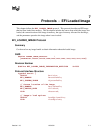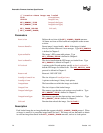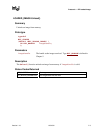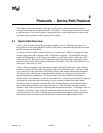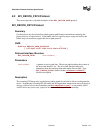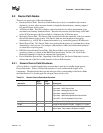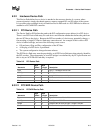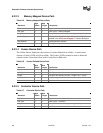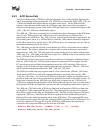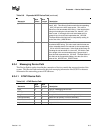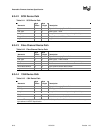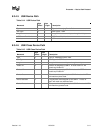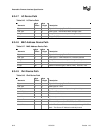
Protocols — Device Path Protocol
Version 1.10 12/01/02 8-5
8.3.2 Hardware Device Path
This Device Path defines how a device is attached to the resource domain of a system, where
resource domain is simply the shared memory, memory mapped I/O, and I/O space of the system.
It is possible to have multiple levels of Hardware Device Path such as a PCCARD device that was
attached to a PCCARD PCI controller.
8.3.2.1 PCI Device Path
The Device Path for PCI defines the path to the PCI configuration space address for a PCI device.
There is one PCI Device Path entry for each device and function number that defines the path from
the root PCI bus to the device. Because the PCI bus number of a device may potentially change, a
flat encoding of single PCI Device Path entry cannot be used. An example of this is when a PCI
device is behind a bridge, and one of the following events occurs:
• OS performs a Plug and Play configuration of the PCI bus.
• A hot plug of a PCI device is performed.
• The system configuration changes between reboots.
The PCI Device Path entry must be preceded by an ACPI Device Path entry that uniquely identifies
the PCI root bus. The programming of root PCI bridges is not defined by any PCI specification and
this is why an ACPI Device Path entry is required.
Table 8-3. PCI Device Path
Mnemonic
Byte
Offset
Byte
Length
Description
Type 0 1 Type 1 – Hardware Device Path
Sub-Type 1 1 Sub-Type 1 – PCI
Length 2 2 Length of this structure is 6 bytes
Function 4 1 PCI Function Number
Device 5 1 PCI Device Number
8.3.2.2 PCCARD Device Path
Table 8-4. PCCARD Device Path
Mnemonic
Byte
Offset
Byte
Length
Description
Type 0 1 Type 1 – Hardware Device Path
Sub-Type 1 1 Sub-Type 2 – PCCARD
Length 2 2 Length of this structure in bytes. Length is 5 bytes.
Function Number 4 1 Function Number (0 = First Function)



